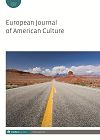
Full text loading...

In 1968, photographer Laura Gilpin published The Enduring Navaho, which intentionally juxtaposes colonialist cartography with an immersive understanding of landscape. This article situates Gilpin’s project within the broader historical trajectory of traditional Navajo spatial imaginaries, including the work of contemporary Navajo artist Will Wilson. Euramerican settler-colonist maps of the Navajo Nation at mid-century were tools for Native displacement, revealing the transnational dilemma of the Navajo people. Their twentieth-century history was one of continual negotiation; on a pragmatic level, it often entailed the cultivation and education of Euramerican allies such as Gilpin. For her, landscape photography offered an alternative indexical authority to colonial maps, and thus had the potential to redefine Navajo space in the Euramerican imagination – in terms that were closely aligned with Navajo ideology. Without escaping the contradictions inherent in her postcolonial situation, Gilpin sought a political space for Navajo epistemology, and thus for Navajo sovereignty.

Article metrics loading...

Full text loading...
References


Data & Media loading...

Publication Date:
https://doi.org/10.1386/ejac_00011_1 Published content will be available immediately after check-out or when it is released in case of a pre-order. Please make sure to be logged in to see all available purchase options.